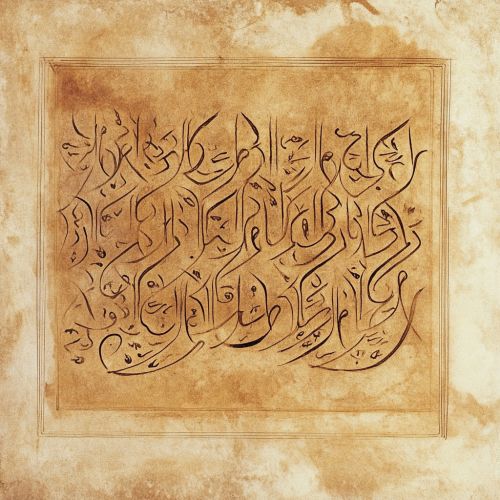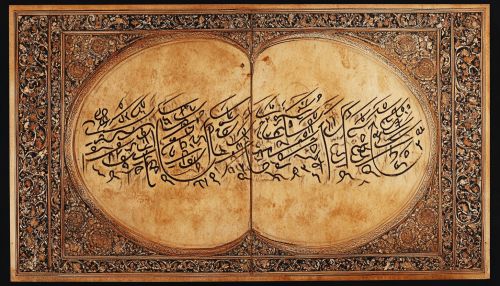Tirhuta script
Introduction
The Tirhuta script, also known as Mithilakshar, is a historical abugida script that was traditionally used for writing the Maithili language. Originating in the Mithila region of the Indian subcontinent, it has a rich history intertwined with cultural and linguistic developments in the area. The script is part of the broader family of Brahmic scripts, which have been instrumental in the development of writing systems across South and Southeast Asia.
Historical Background
The Tirhuta script has been in use for several centuries, with its origins tracing back to the early medieval period. It is believed to have evolved from the Gupta script, which itself is a descendant of the Brahmi script. The earliest inscriptions in Tirhuta date back to the 10th century, although the script likely existed in some form before this time.
During the medieval period, the script flourished under the patronage of the Mithila Kingdom, which was a significant cultural and intellectual center. The script was used not only for literary and religious texts but also for administrative purposes. Manuscripts written in Tirhuta have been found in various parts of India and Nepal, indicating its widespread use.
Structure and Characteristics
Tirhuta is an abugida, meaning that each character represents a consonant with an inherent vowel sound, which can be altered with the use of diacritics. The script is written from left to right and consists of 12 vowels and 33 consonants. Like other Brahmic scripts, it employs a system of ligatures and conjuncts to represent clusters of consonants.
Vowels
The vowels in Tirhuta are divided into independent and dependent forms. Independent vowels are used at the beginning of a word, while dependent vowels are used in conjunction with consonants. The script includes both short and long vowel sounds, which are crucial for distinguishing between different words in the Maithili language.
Consonants
Tirhuta consonants are categorized based on their place and manner of articulation. The script includes stops, nasals, fricatives, and approximants. Each consonant has an inherent 'a' sound, which can be modified or muted using vowel diacritics or the virama sign.
Diacritics and Ligatures
Diacritics in Tirhuta are used to modify the inherent vowel sound of consonants. The script also employs a range of ligatures to represent consonant clusters, which are formed by combining two or more consonant characters. These ligatures are an essential feature of the script and contribute to its aesthetic complexity.


Usage and Decline
The Tirhuta script was the primary writing system for Maithili until the 20th century. It was used extensively in religious, literary, and administrative documents. However, with the advent of British colonial rule and the subsequent introduction of the Devanagari script, Tirhuta began to decline in usage.
The shift towards Devanagari was driven by several factors, including its adoption as the standard script for Hindi and its increasing prevalence in education and administration. As a result, Tirhuta gradually fell out of favor, and by the mid-20th century, it was largely replaced by Devanagari for writing Maithili.
Revival Efforts
In recent years, there has been a renewed interest in the Tirhuta script, driven by cultural and linguistic revival movements. Efforts have been made to preserve and promote the script through educational programs, digital resources, and cultural initiatives. Scholars and linguists are working to document and digitize existing Tirhuta manuscripts to ensure their preservation for future generations.
The script has also been included in the Unicode Standard, which has facilitated its use in digital media and online platforms. This has opened up new possibilities for the dissemination and study of Tirhuta texts, contributing to the broader efforts to revitalize the script.
Cultural Significance
Tirhuta holds significant cultural importance for the Maithili-speaking community. It is not only a symbol of linguistic heritage but also a testament to the rich literary and intellectual traditions of the Mithila region. The script has been used to compose a wide range of texts, including religious scriptures, poetry, and philosophical treatises.
The revival of Tirhuta is seen as an essential step in preserving the cultural identity of the Maithili people. It is celebrated in various cultural events and festivals, where traditional calligraphy and manuscript workshops are organized to educate and engage the younger generation.
Conclusion
The Tirhuta script is a vital part of the linguistic and cultural tapestry of the Mithila region. Despite its decline in the 20th century, efforts to revive and preserve the script are gaining momentum, driven by a growing recognition of its historical and cultural significance. As these efforts continue, Tirhuta is poised to reclaim its place as a cherished symbol of Maithili heritage.
